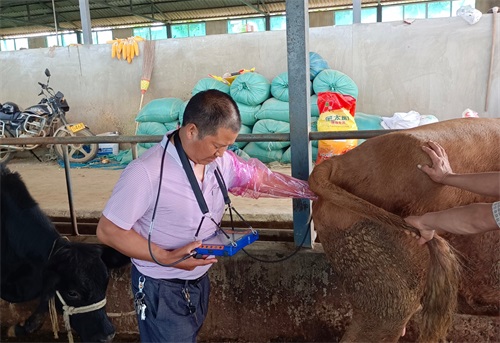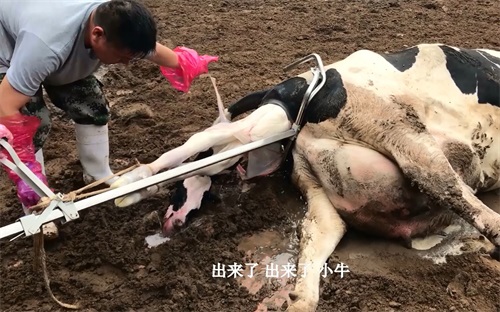Early diagnosis in companion animals has become increasingly vital as veterinary medicine shifts toward proactive and preventive care. One of the most transformative tools aiding this shift is Veterinary ultrasound. While typically associated with advanced clinical environments, ultrasound technology is now a common asset in general practices, mobile clinics, and even on large livestock farms. In a single, non-invasive scan, veterinarians can gain insights that would otherwise require surgical exploration or multiple laboratory tests.
Veterinary ultrasound refers to the use of high-frequency sound waves to generate live images of internal structures. These real-time images allow veterinarians to observe organs, detect abnormalities, monitor pregnancies, and guide treatments without exposing animals to radiation. In the hands of a skilled veterinarian, an ultrasound machine can make the difference between early intervention and delayed treatment.
Understanding the Role of Ultrasound in Early Detection
One of the main advantages of ultrasound is its ability to reveal subtle internal changes before clinical symptoms appear. For example, in cats and dogs, early renal disease may not be visible through bloodwork alone. However, an ultrasound can detect changes in kidney size, shape, or echotexture that suggest chronic kidney disease is beginning. By identifying this early, a treatment plan can be created that delays progression and improves quality of life.
Ultrasound is also particularly valuable for detecting tumors, fluid accumulation, or organ anomalies that cannot be palpated externally. In breeds predisposed to certain cancers, such as hemangiosarcoma in Golden Retrievers, periodic ultrasound screenings can be life-saving. For example, a splenic mass might go unnoticed during a routine check-up, but an ultrasound can easily detect it before it ruptures and causes internal bleeding.

Applications Across Species and Conditions
Ultrasound is not limited to dogs and cats. In exotic animals, such as rabbits or reptiles, ultrasound is often the only safe way to evaluate internal organs, as X-rays may not produce clear images through dense shells or small bodies. For birds, ultrasound can assess the reproductive tract to monitor egg binding or follicular stasis.
In larger animals, such as horses, cattle, and pigs, ultrasound is a staple tool for reproductive monitoring. For instance, in mares, ultrasonography helps confirm ovulation, detect uterine infections, and ensure fetal health during pregnancy. Similarly, in dairy cows, ultrasound is used to evaluate ovarian structures and uterine involution postpartum, both of which affect fertility outcomes.
As a side note, it’s worth mentioning that some manufacturers specialize in ultrasound equipment tailored specifically for large animal use. One such company, BXL, produces machines robust enough to handle the rigors of farm environments while offering the precision required for reproductive and internal exams.
Ultrasound-Guided Procedures: Safety and Precision
One area where veterinary ultrasound shines is in guiding medical procedures. Needle aspirates, cystocentesis (bladder fluid collection), or biopsies can all be done more safely with ultrasound. For instance, removing fluid from the pericardial sac in a dog with cardiac tamponade can be extremely risky without imaging. With ultrasound, a veterinarian can visualize the heart and surrounding fluid in real time, positioning the needle safely.
This guidance reduces complications, increases sample quality, and often eliminates the need for anesthesia. As a result, early diagnosis becomes not only possible but also safer and more affordable for pet owners.
Chronic Disease Monitoring
Veterinary ultrasound isn’t just for initial diagnosis—it plays a key role in ongoing disease management. Pets with chronic pancreatitis, bladder stones, or heart disease often undergo repeated ultrasound exams to monitor disease progression and assess the effectiveness of treatments.
For example, a dog diagnosed with mitral valve disease can benefit from serial echocardiograms (cardiac ultrasound) to track valve deterioration and determine the optimal time to begin or adjust medications. Similarly, cats with lower urinary tract disease can be monitored for bladder wall thickness or stone formation with routine abdominal ultrasounds.
Improving Pet Owner Compliance and Education
Ultrasound’s visual nature also improves communication with pet owners. Many clinics now display the ultrasound screen in real time during the scan. When owners see their pet’s organs moving, or a fetus kicking inside a pregnant dog, it fosters understanding and strengthens trust in the diagnosis. This transparency often leads to better compliance with follow-up care and prescribed treatment plans.
Furthermore, the non-invasive nature of ultrasound reduces stress for both animals and their owners. Most scans can be done with minimal restraint and without sedation, especially for calm or trained pets. This makes it easier to schedule preventive scans or wellness checks for senior animals, where early detection is most critical.

Future Trends: portable ultrasound and Telemedicine
Veterinary ultrasound is rapidly evolving. Newer devices are more portable, user-friendly, and compatible with mobile apps. These developments make ultrasound feasible in fieldwork, rural farms, and house calls. For example, a veterinarian working in a swine facility can assess reproductive status in sows with a handheld scanner and record data instantly via Bluetooth.
Tele-ultrasound is also gaining ground. A general practice vet can perform a scan and send the video file to a board-certified radiologist for interpretation. This expands access to expert insights even in remote areas, improving diagnostic accuracy and continuity of care.
Final Thoughts
Veterinary ultrasound has become an indispensable tool in the early diagnosis and treatment of pets and livestock. From identifying tumors before symptoms appear to guiding minimally invasive procedures and improving chronic disease monitoring, ultrasound empowers veterinarians to act sooner and with greater confidence.
For pet owners, this means earlier answers, more treatment options, and better outcomes. For veterinarians, it provides a powerful diagnostic ally that continues to evolve with technology. As machines become more affordable and accessible, the benefits of ultrasound will extend to even more clinics, farms, and homes around the world.
Although often unnoticed, companies like BXL play an important role by designing ultrasound equipment built specifically for the demands of large-animal care, bridging the gap between technology and hands-on animal husbandry.








